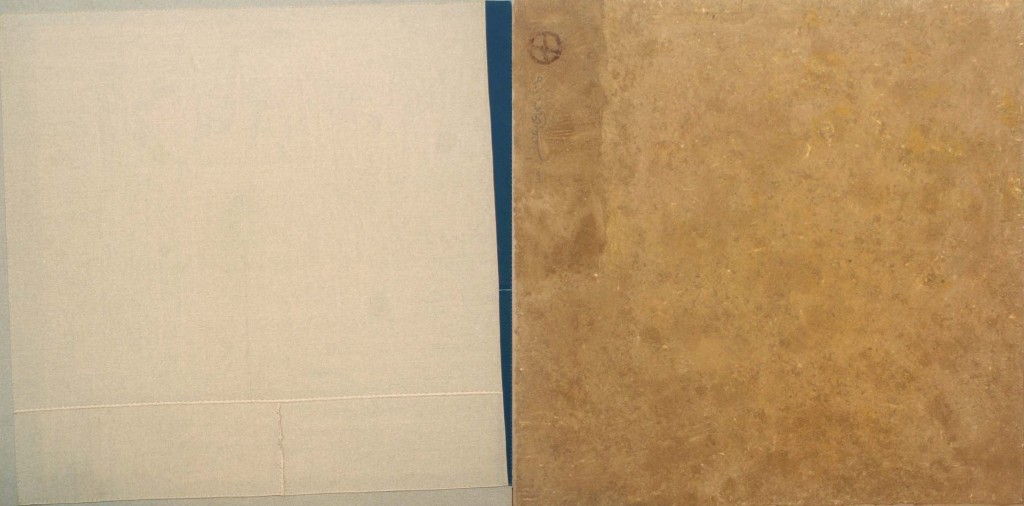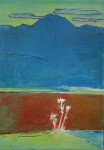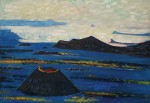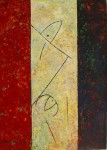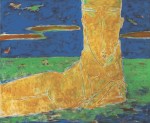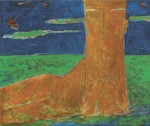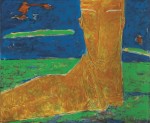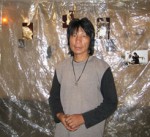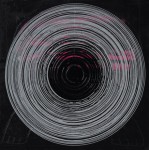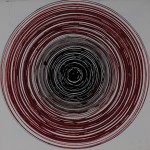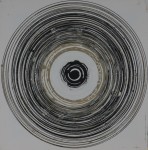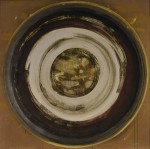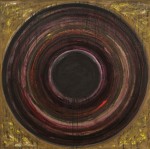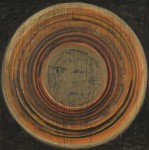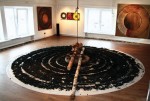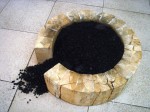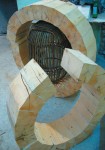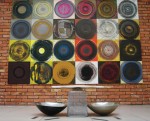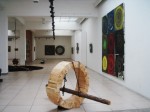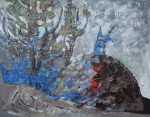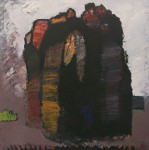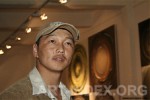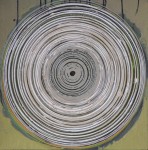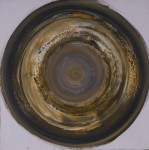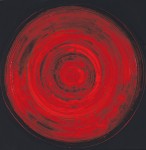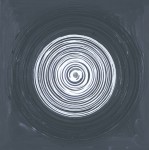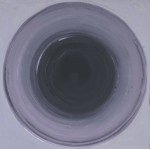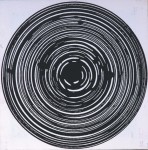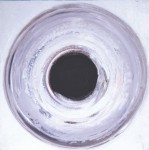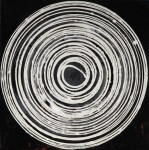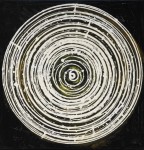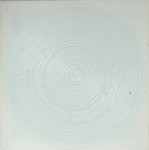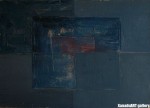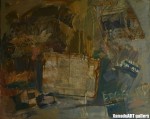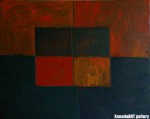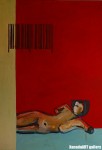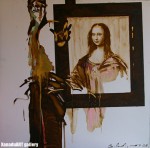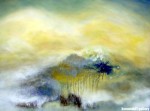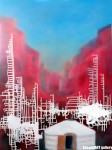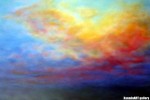XanaduART gallery is proud to present Enkhbold Togmidshirev’s solo exhibition “Mining in the Mind”.
In his latest work, Enkhbold uses a variety of atypical materials to create vast, abstract and generally monochrome canvases that are somehow reminiscent of the Mongolian landscape. Each “painting” is unique in terms of technique: in one piece, a large piece of cloth is sewn onto the canvas and painted over, in another, the artist has used crushed horse dung instead of paint, a third piece is made with ashes, and still another one uses powdered metal. The use of such unconventional materials creates a quite mesmerizing textured effect, which endows their abstract composition with a very personal character.
Man’s ambivalent relationship with nature has always been an important theme for Enkhbold. Most pieces emphasize the duality of this relationship, as the artist puts together a light canvas with a dark one, juxtaposing the two in terms of color and texture. This juxtaposition can be extended even further – tradition vs. modernity, nomadism vs. consumerism, subsistence economy vs. intensive mining, etc. For those who are interested to hear more about his work, Enkhbold will give a presentation on Saturday, July 9 between 3 and 5 p.m.
Born in 1978, Enkhbold graduated from the Institute of Fine Arts in Ulaanbaatar, Mongolia with a painting degree in 2005. This is Enkhbold’s first solo exhibition as a XanaduART gallery artist.
For more information, please contact the gallery at 976-11-310239 or e-mail info@xanaduartgallery.org.
